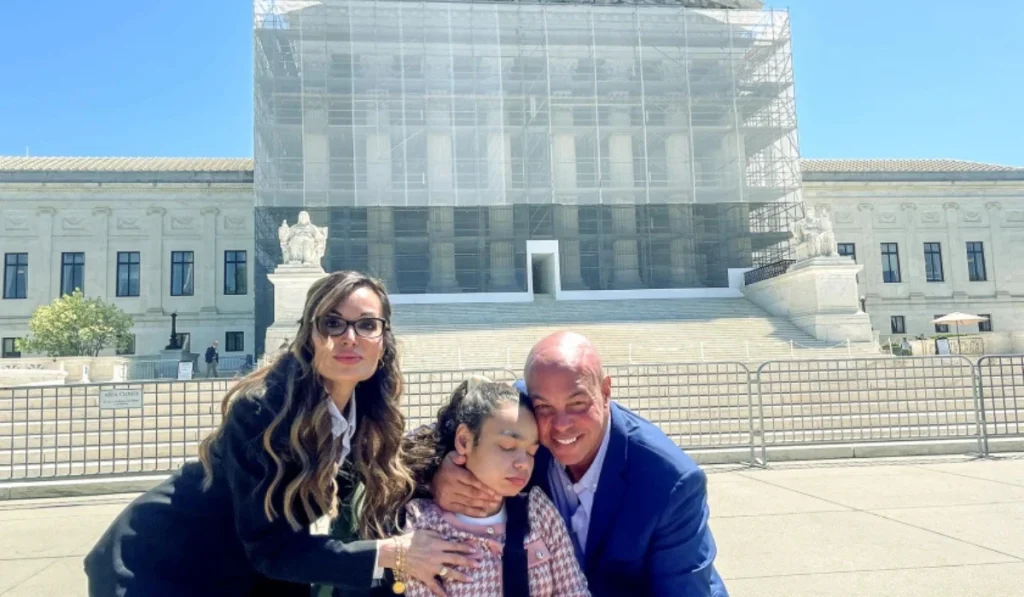The U.S. Supreme Court appeared ready on Monday to side with a Minnesota student with a severe form of epilepsy, signaling it could overturn a decades-old legal precedent that makes it harder for families to win disability discrimination cases against public schools.
The case, A.J.T. v. Osseo Area Schools, centers on 19-year-old Ava Tharpe, a student with Lennox-Gastaut Syndrome, a rare form of epilepsy that causes near-daily seizures, particularly in the mornings and evenings. Due to her condition, Ava could not attend school before noon, and her parents requested accommodations, including extended school hours, which were initially resisted by her Minnesota school district.
After securing additional learning time through the Individuals with Disabilities Education Act (IDEA) administrative process, the Tharpes seek compensatory damages under two major federal civil rights laws: the Rehabilitation Act of 1973 and the Americans with Disabilities Act of 1990 (ADA).
During nearly 90 minutes of oral arguments, several justices expressed skepticism toward the legal standard applied by the U.S. Court of Appeals for the 8th Circuit. That standard, stemming from the 1982 case Monahan v. Nebraska, requires families to prove “bad faith or gross misjudgment” — a notably higher bar than the negligence or deliberate indifference standards typically used in other ADA and Rehabilitation Act cases.
Debate Over the Standard of Liability
Roman Martinez, the Tharpes’ attorney, urged the Court to reject what he called a “uniquely stringent” test that disproportionately burdens students with disabilities.
“It’s wrong to impose any sort of uniquely stringent test on children facing discrimination at school,” Martinez said, according to reporting by Education Week. He warned that the school district’s shifting legal arguments would weaken protections for vulnerable students nationwide.
Backing the Tharpes, Nicole F. Reaves, an assistant to the U.S. solicitor general, said the district’s position would create a “breathtakingly broad rule” requiring every plaintiff under the ADA and Rehabilitation Act to prove an intent to discriminate — a standard Congress never intended.
Meanwhile, the Osseo district’s lawyer, Lisa S. Blatt, defended the Monahan precedent, arguing it has shaped school district practices for over 40 years. Blatt insisted that reversing the rule would expose public schools to lawsuits over every “good-faith disagreement” about accommodations.
However, Blatt faced sharp pushback during the hearing, particularly after accusing opposing counsel of lying about the district’s legal arguments — a claim Justice Neil Gorsuch rebuked.
“I think you should be more careful with your words, Ms. Blatt,” Gorsuch said after pressing her to retract the accusation.
Limited or Sweeping Ruling?
While several justices appeared sympathetic to the Tharpes, others cautioned about issuing a broad ruling that would immediately define the standard for all cases under the ADA and Rehabilitation Act.
Justice Amy Coney Barrett suggested that the Court could issue a narrow decision favoring Ava without setting a definitive nationwide liability standard, allowing the issue to continue developing in the lower courts.
“If you’re going to rule against us, at least wipe the slate clean,” Blatt urged the Court, asking them to clearly state whether a deliberate-indifference or discriminatory-intent standard applies.
Justice Sonia Sotomayor also criticized the Monahan rule, questioning why students should face such a high barrier to proving discrimination.
What Comes Next
The Court’s decision, expected by late June or early July, could have far-reaching consequences for how students with disabilities are protected under federal civil rights laws.
A ruling that rejects the heightened “bad faith” standard could make it significantly easier for students across the country to seek damages when schools fail to provide appropriate accommodations, reshaping how schools handle disability services moving forward.
This story is based on original reporting from Education Week. Read their full coverage here.





